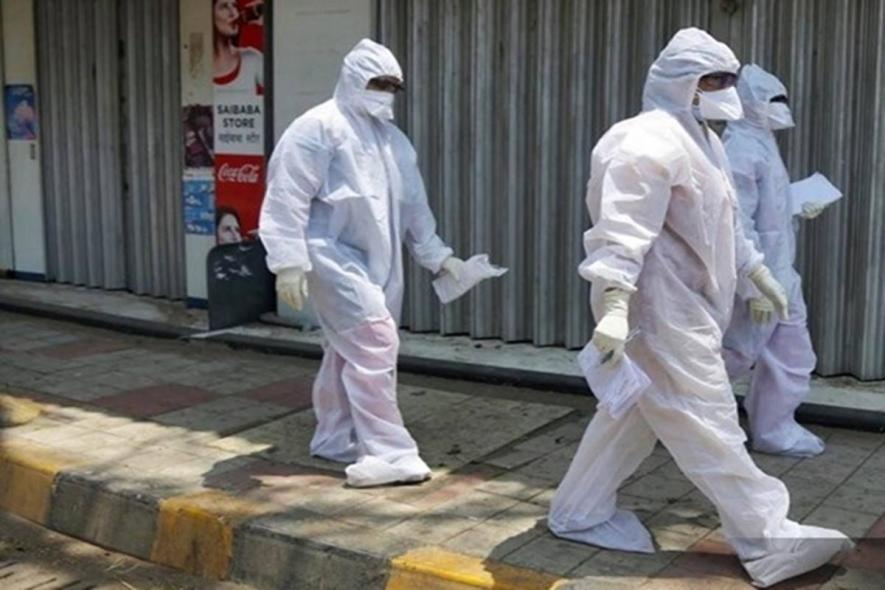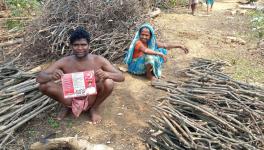COVID-19: What Do Sero-surveys Tell Us and How Are They Useful?

Representational image. | Image Courtesy: Financial Express
India is conducting a series of sero-surveys in different cities – the latest being Pune, Maharashtra. Pune’s sero-survey included five areas or ‘prabhags’ ,which had a high number of COVID-19 cases. A total of 1,664 respondents, all above the age of 18, were surveyed. It was found that 51.5% of the respondents had antibodies against SARS-CoV-2, the coronavirus which has caused the COVID-19 pandemic. Earlier, in Delhi, Mumbai, Behrampur (in Odisha) and other cities, similar surveys were conducted.
With fairly small sample sizes representing lakhs of people, sometimes even crores, there are certain concerns about sero-surveys. NewsClick spoke to Satyajit Rath, an immunologist and specialist in infections and diseases with the Indian Institute of Science Education and Research (IISER), Pune, about the efficacy of such surveys.
NewsClick (NC): After the Pune survey results were in the public domain, a large section of the media reported that 51% of the city’s population had been infected. Can this be deduced from 1,664 samples in a city with a population of over 35 lakh? Is there a need for more samples and surveys before such declarations are made?
Satyajit Rath (SR): This was NOT a survey of 'Pune' (district or city). It was a survey of five sub-wards ('prabhags') in Pune city that had reported high numbers of COVID-19 cases. So, the commonly made extrapolation you mention is wrong and meaningless. The survey was not designed to say what proportion of people in Pune city have been infected. It was designed as a modest initial assessment of the extent of the likely virus spread in those particular communities that seemed to have had a fair number of cases.
The '51%' number is also meaningless. It is a calculation from very differing numbers; one prabhag’s numbers are in the sixties and another is in the thirties, for example.
Yes, we need much more extensive as well as structured sampling and survey work, followed up over time in order to understand large-scale situations. In an extremely variable situation, we cannot depend on small-scale data to tell us anything particularly meaningful about large-scale situations. The Pune sero-survey is simply an initial step in what I hope will be a series of such follow-up studies.
NC: Sero-surveys could be a useful tool to gauge the level of infection in a particular area. What, according to you, is the significance of such a survey from an epidemiological point of view?
SR: A virus does not recognise political geography – it does not 'spread in Pune city'. It spreads in communities of people who are in contact with each other. So, meaningful understanding from such surveys (and indeed, from all COVID-19-related epidemiology) is always going to be about communities, not administrative entities like cities, states or countries. Yet, our actual government responses to the epidemic is inevitably going to be operational on the basis of these political geographies. We at least need to keep that disconnect in mind when we interpret epidemiological evidence and use it for making policy decisions.
As you point out, a sero-survey is a good tool to judge how common the infection has been in a given community. We should have been, and should continue, doing serial sero-surveys regularly, in order to track the speed with which the virus spreads through communities. (I recognise the many resource limitations this involves, of course.)
So, what does this sero-survey actually tell us right away? Firstly, it confirms a few obvious things. It says that the virus has been spreading very extensively in these communities. It says that the virus reaches adults of all ages, pretty much (we do not know about children; they were not sampled). It says that the virus spreads more in communities that live in crowded conditions (huts and tenements), as would be expected of a respiratory virus infection. Having confirmatory evidence is a good thing.
More interestingly, this sero-survey indicates directions to think about. It says that while the numbers of COVID-19 cases reported from these communities over the past months is only about four percent on an average, about 50% of the people have been infected. Does this mean that the virus mostly causes infection without illness (asymptomatic infection) and that it is much less lethal than we thought? This would at least be possible if our COVID-19 case (and death) numbers were reliable. Are they? This is a question that we should be asking much more intensively than we have been.
The sero-survey also allows us to ask a major question: What are the chances of re-infection? We can now plan a follow-up survey to compare the rates of future infection in those who are 'seronegative' versus those who are 'seropositive'. The sero-survey also allows us to plan follow-up work that asks, for example: How long do these antibody responses last? This would have implications for policy, in order to ask ‘what are the levels of protective antibodies among those who are seropositive? And such follow-up work would then let us get an answer to the question: What levels of protective antibodies are actually needed to protect against disease? That, of course, is important for planning vaccination policies.
NC: How can sero-surveys be useful in preventing an epidemic?
SR: By their very nature, sero-surveys are retrospective; we are looking back over our collective shoulder. So, I doubt that they are directly useful in actually preventing an epidemic, although it is quite possible that I am missing something.
A sero-survey is done by choosing a cluster of population and collecting their blood sample to detect the presence of specific antibodies created by the immune system against a pathogen. Here, in the case of SARS-CoV-2, the presence of IgG antibody specific to the virus is detected in the blood sample. After an exposure and the concomitant infection by a pathogen, the immune system produces a variety of antibodies against it. The antibodies produced can reside in the body for a long period, say several months. When tested, someone who was even not aware of the infection (asymptomatic cases) would show the presence of the specific antibody. Such tests conducted on wider population can provide an idea of the level of infection there. However, caution should be exercised while coming to conclusions from such surveys.
Get the latest reports & analysis with people's perspective on Protests, movements & deep analytical videos, discussions of the current affairs in your Telegram app. Subscribe to NewsClick's Telegram channel & get Real-Time updates on stories, as they get published on our website.
























